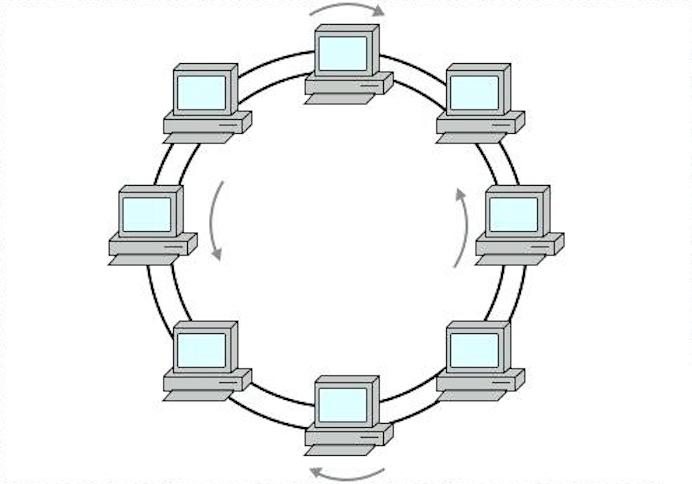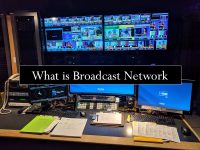Before discussing ring technology we have to know about what is network topology. Network topology is an arrangement of nodes in the network. Nodes (computers) are connected to each other through hubs, switches, routers and wires. Wires may be fiber optics, copper wires or coaxial cables. There is a different arrangement of nodes and nodes are connected with the wires in different shapes.
We can categorize network topology into different ways and one of which is ring topology that we will discuss today.
In a ring, topology nodes are connected to each other in a ring form. The data travel from one node to another node in the form of a ring.

Suppose computer A wants to send data to computer D then data is first placed in the packet and the packet is transferred to computer B then computer C and finally, to the computer, D. Data is travelling in the form packets in the ring topology. If the data is received in the target node then the empty packet is passed to the next node until it reaches the source node. The source node will finally know that its data is received successfully.
Data in the ring topology move in either clockwise direction or anti-clockwise direction. Suppose data is travelling in a clockwise direction and any node or wire breaks then data transfer starts in the opposite direction i.e. anti-clockwise so that data reaches the destination node.
Some ring topology only supports the unidirectional flow of data while another ring topology has a feature of bidirectional data flow.
Ring topology is best in high traffic of data. Ring topology is better than bus topology but it is slower than a star topology. Note that in a bus topology data is transferred in linear form. And in a star topology, all the nodes are connected to each other through a central hub.
Example of ring topology:-
- Ring topology is used in WAN (Wide area network)
- Used in MAN (Metropolitan area network)
- Sometimes used in homes


















